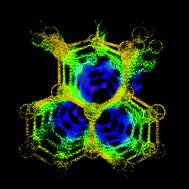Frustrated Lewis pair chemistry of hydride sponges†
Abstract
An improved synthesis for 1,8-bis(dimethylboranyl)naphthalene (1, hydride sponge) was developed avoiding the use of tin(IV) reagents. The related 1,2-bis(dimethylboranyl)benzene (2) was prepared. 1 combined with 1,8-bis(dimethylamino)naphthalene (3, proton sponge) is a Frustrated Lewis pair (FLP) that forms adducts [1-EHn−1][3-H] with the protic compounds EHn = H2O, NH3, H2S, PH3, H2Se, HCN. Their structures show the chelation of the deprotonated substrates, except for CN− (binds to one B atom of 1). The mechanisms of formation of [1-EHn−1][3-H] were explored by NMR spectroscopy. Similar reactions took places for the FLP system 2 + 3, but the adducts [2-EHn−1][3-H] are less stable; only the PH3 adduct was isolated and AsH3 forms a chelated adduct [2-N![[double bond, length as m-dash]](https://www.rsc.org/images/entities/char_e001.gif) C(CD3)AsH2][3-H]. FLP 1 + 3 does not react with molecular hydrogen, but the formal adduct [1-H][3-H] was isolated via salt metathesis from K[1-H] and [3-H]Cl; it is stable towards water, atmospheric oxygen and up to 100 °C; its thermal decomposition proceeds without formation of H2. The stabilities of both, the mixture 1 + 3 + H2 and the formal adduct [1-H][3-H], allow concluding that hydrogen activation of FLP 1 + 3 is kinetically prevented.
C(CD3)AsH2][3-H]. FLP 1 + 3 does not react with molecular hydrogen, but the formal adduct [1-H][3-H] was isolated via salt metathesis from K[1-H] and [3-H]Cl; it is stable towards water, atmospheric oxygen and up to 100 °C; its thermal decomposition proceeds without formation of H2. The stabilities of both, the mixture 1 + 3 + H2 and the formal adduct [1-H][3-H], allow concluding that hydrogen activation of FLP 1 + 3 is kinetically prevented.



 Please wait while we load your content...
Please wait while we load your content...